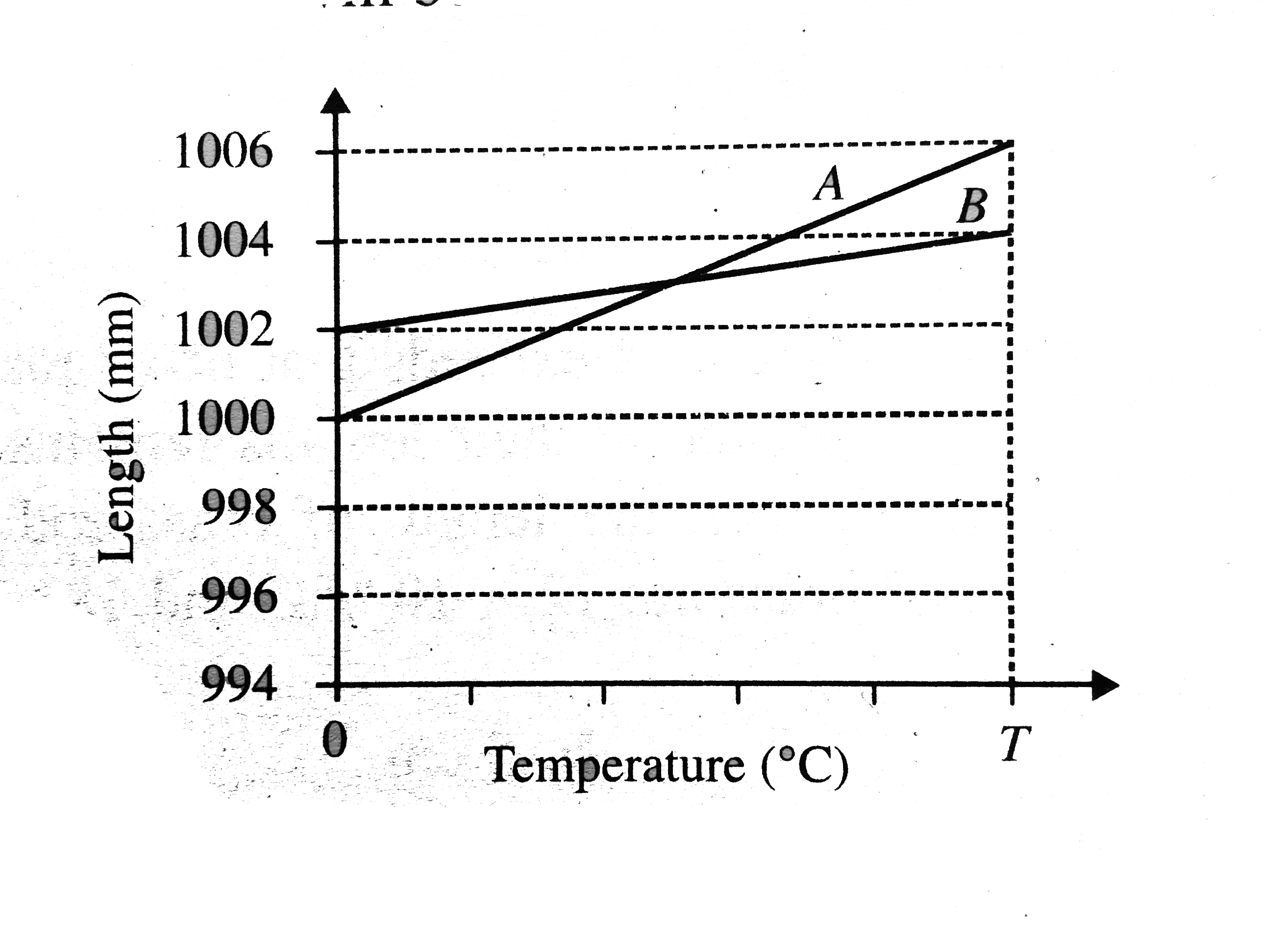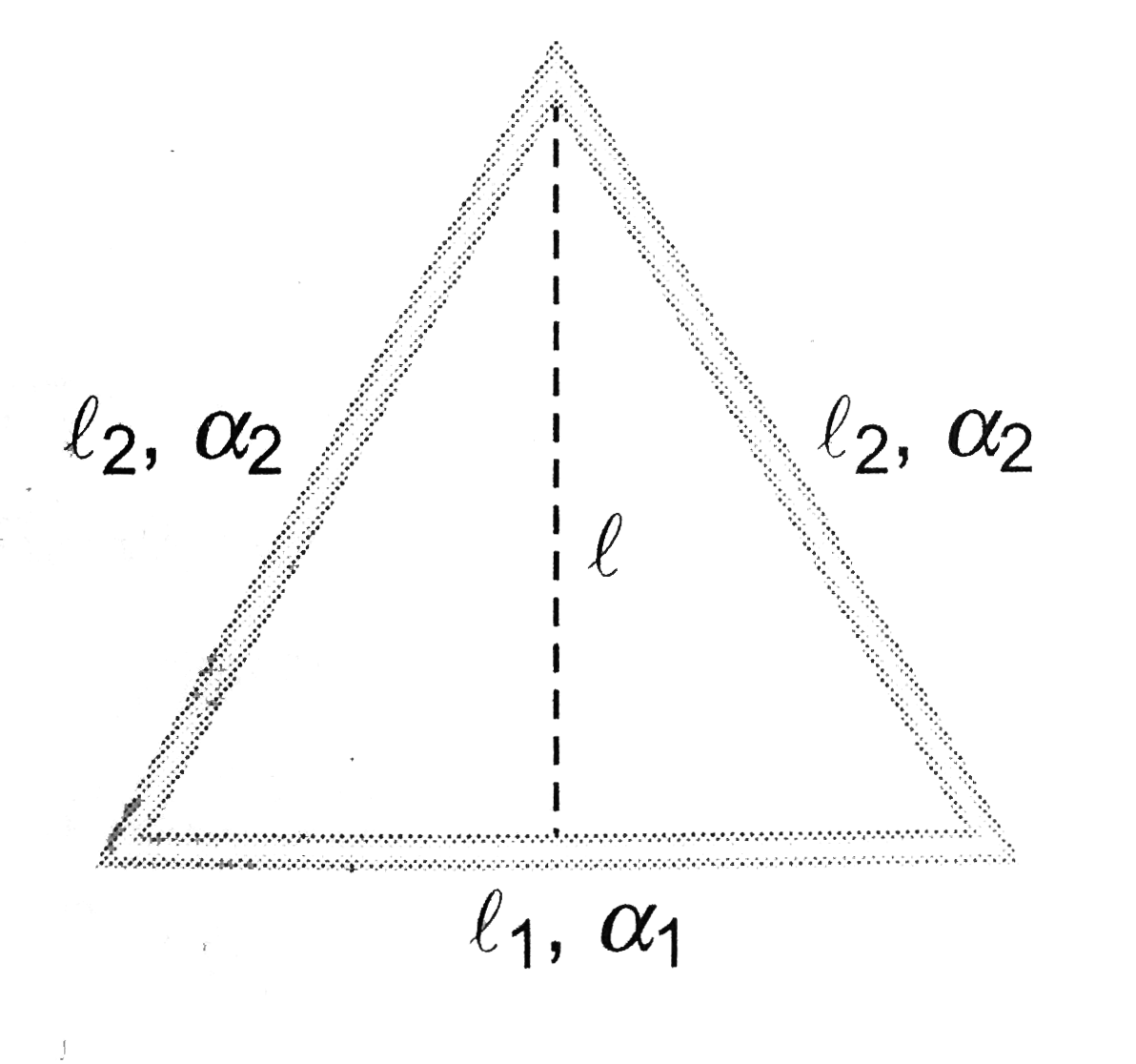The temperature of an isotropic cubical solid of length l0, density ρ0 and coefficient of linear expansion α is increased by 20∘C. Then at higher temperature , to a good approximation:-
Length is l0(1+20α)
Total surface area is l20(1+40α)
Total volume is l30(1+60α)
Density is ρ01+60α
The correct Answer is:A, C, D
To solve the problem step by step, we will analyze the effects of temperature change on the dimensions, surface area, volume, and density of an isotropic cubical solid.
Step 1: Calculate the new length of the cube
The linear expansion of a solid can be expressed as:
L=L0(1+αΔT)
where:
- L0 is the original length,
- α is the coefficient of linear expansion,
- ΔT is the change in temperature.
Given that the temperature is increased by 20∘C:
L=L0(1+α⋅20)
Step 2: Calculate the new total surface area
The total surface area A of a cube is given by:
A=6L2
Using the new length from Step 1:
A=6(L0(1+α⋅20))2
Expanding this, we have:
A=6L20(1+20α)2
Using the approximation for small expansions:
A≈A0(1+40α)
where A0=6L20.
Step 3: Calculate the new total volume
The volume V of a cube is given by:
V=L3
Using the new length from Step 1:
V=(L0(1+α⋅20))3
Expanding this, we have:
V=L30(1+20α)3
Using the approximation for small expansions:
V≈V0(1+60α)
where V0=L30.
Step 4: Calculate the new density
Density ρ is defined as mass per unit volume:
ρ=mV
Since the mass m remains constant, the new density ρ′ can be expressed as:
ρ′=ρ0V0V
Substituting the volume from Step 3:
ρ′=ρ0V0V0(1+60α)
Thus:
ρ′=ρ01+60α
Summary of Results
1. New Length: L=L0(1+20α)
2. New Total Surface Area: A=6L20(1+40α)
3. New Total Volume: V=L30(1+60α)
4. New Density: ρ′=ρ01+60α
The linear expansion of a solid can be expressed as:
L=L0(1+αΔT)
where:
- L0 is the original length,
- α is the coefficient of linear expansion,
- ΔT is the change in temperature.
L=L0(1+α⋅20)
The total surface area A of a cube is given by:
A=6L2
Using the new length from Step 1:
A=6(L0(1+α⋅20))2
Expanding this, we have:
A=6L20(1+20α)2
Using the approximation for small expansions:
A≈A0(1+40α)
where A0=6L20.
The volume V of a cube is given by:
V=L3
Using the new length from Step 1:
V=(L0(1+α⋅20))3
Expanding this, we have:
V=L30(1+20α)3
Using the approximation for small expansions:
V≈V0(1+60α)
where V0=L30.
Density ρ is defined as mass per unit volume:
ρ=mV
Since the mass m remains constant, the new density ρ′ can be expressed as:
ρ′=ρ0V0V
Substituting the volume from Step 3:
ρ′=ρ0V0V0(1+60α)
Thus:
ρ′=ρ01+60α
1. New Length: L=L0(1+20α)
2. New Total Surface Area: A=6L20(1+40α)
3. New Total Volume: V=L30(1+60α)
4. New Density: ρ′=ρ01+60α
Topper's Solved these Questions
- BOOK - ALLENCHAPTER - GEOMETRICAL OPTICSEXERCISE - EXERCISE -0310videos
GEOMETRICAL OPTICS
- BOOK - ALLENCHAPTER - GEOMETRICAL OPTICSEXERCISE - ASSERTION-REASON36videos
GEOMETRICAL OPTICS
- BOOK - ALLENCHAPTER - GEOMETRICAL OPTICSEXERCISE - EXERCISE -0165videos
GEOMETRICAL OPTICS
- BOOK - ALLENCHAPTER - CURRENT ELECTRICITYEXERCISE - EX.II66videos
CURRENT ELECTRICITY
- BOOK - ALLENCHAPTER - GRAVITATIONEXERCISE - EXERCISE 49videos
GRAVITATION
Similar Questions
The temperature of an isotropic cubical solid of length L, density d and coefficient of expansion α is raised by 10∘C. To a good approximation, at final temperture
View SolutionA thin rod, length L0 at 0∘C and coefficient of linear expansion α has its two ends mintained at temperatures θ1 and θ2 respectively Find its new length .
View SolutionTwo metallic rods of length l and 3l have coefficient of linear expansion α and 3α respectively. The coefficient of linear expansion ofr their series combinations, is
View SolutionThe volume of a solid decreases by 0.6% when it is cooled through 50∘C. Its coefficient of linear expansion is
View Solution
The variation of length of two metal rods A and B with change in temperature is shown in Fig. the coefficient of linear expansion αA for the metal A and the temperature T will beView SolutionIf I is the moment of inertia of a solid body having α-coefficient of linear expansion then the change in I corresponding to a small change in temperature ΔT is
View SolutionDensity of solids hardly changes with a rise in temperature by 20∘C.
View SolutionThe radius of a ring is R and its coefficient of linear expansion is α. If the temperature of ring increases by θ then its circumfrence will increase by
View SolutionTwo straight metallic strips each of thickness t and length l are rivetted together. Their coefficients of linear expansions areα1andα2. If they are heated through temperature ΔT, the bimetallic strip will bend to form an arc of radius
View SolutionAn isosceles triangles is formed with a thin rod of length l1 and coefficient of linear expansion α1, as the base and two thin rods each of length l2 and coefficient of linear expansion α2 as the two sides. The distance between the apex and the midpoint of the base remain unchanged as the temperature is varied. the ratio of lengths l1l2 is
 View Solution
View Solution

